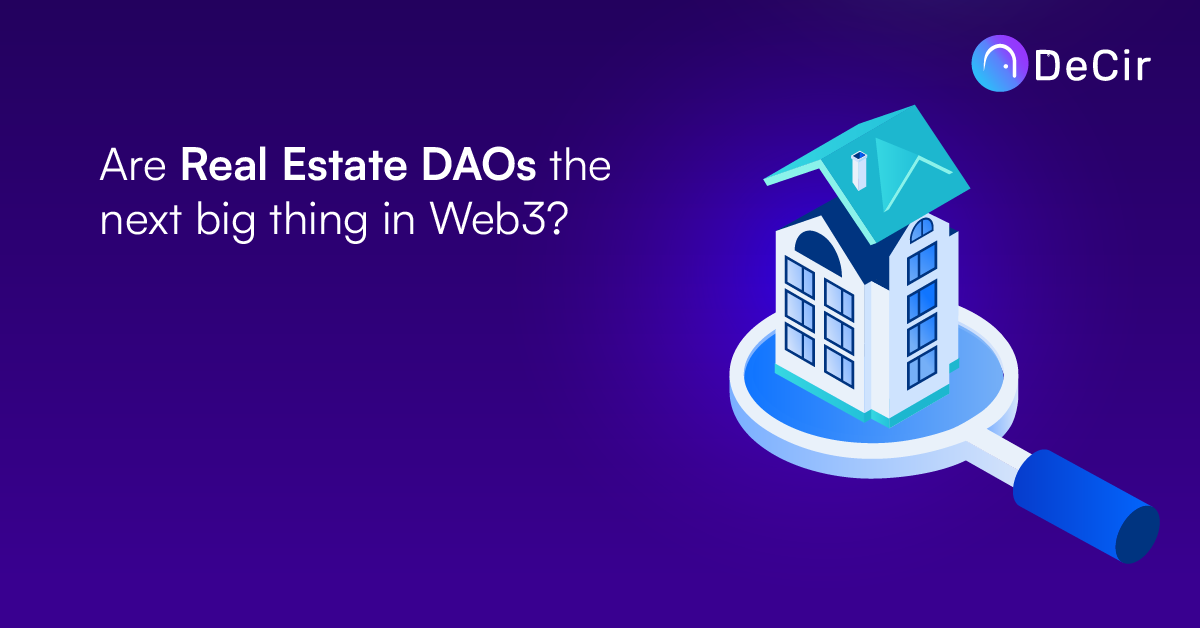Virtual lands have been at the forefront of the emergence of the metaverse since 2021. Similarly, fractional ownership of real estate assets has been in the mix for quite some time. Real estate DAOs have emerged to decentralize real estate investment by simplifying entry to communities. In this article, we discuss the gradual emergence of DAO in real estate and how this could be the next big trend in Web3.
TL;DR
- Real estate DAOs function by leveraging smart contracts to executive community rules and governance;
- They present members with the opportunity to invest in physical properties through fractional ownership;
- Real estate DAOs raise funds by selling their native tokens and using funds in the DAO treasury to invest in physical assets
Leveraging Blockchain Smart contracts
Real estate DAOs function like every other decentralized autonomous organization on the blockchain. They leverage blockchain smart contracts to code and execute community rules.
Typically, these rules are adjusted based on community voting on proposals. Oftentimes, community members are required to hold the DAOs native token to be eligible to participate in the voting procedures.
Thus, while real estate DAOs have their focus on physical property investment, they leverage the blockchain to maintain their decentralized structures, execute rules, and coordinate community activities.
Also read: Top 5 Industries adopting NFTs
Investment through fractional Ownership
Real estate DAOs leverage fractional ownership to decentralize property investment for their communities. They invest funds in the DAO treasury into physical properties such as living apartments, shopping centers, or commercial blocks. They then encourage members to invest in such properties using the DAO’s native token. Each member then earns returns based on their level of investment and the yield on the property they invested in.
Asset tokenization plays a prominent role in the work of real estate DAOs. Real estate DAOs often issue fractionalized NFT tokens, which members can buy and hold as proof of their investment.
The entire process surrounding property tokenization, fractionalization, and issuance is usually done on the blockchain. Also, returns are often distributed through smart contracts. Balcony DAO is one such project leveraging DAO for real estate.
Suggested article: How members make money from DAOs
Fundraising Mechanism
There are two broad ways that real estate DAOs can raise funds.
First, real estate DAOs can raise funds through token issuance. Real estate DAOs can issue and sell their native tokens on the blockchain. In fact, this is the most common way that blockchain projects raise funds. Investors (and the entire public) will usually buy these tokens in the hope that they will appreciate over time.
Real estate DAOs can also raise funds through NFT sales. NFT sales in this regard mean that the DAO sells tokenized properties as fractional NFTs to investors and its community. In this case, issuing fractional NFT is usually preceded by buying and tokenizing physical properties.
The returns earned from such investments can be shared among investors. There is also the possibility that such assets will grow in value. This will result in higher profits for investors and the DAO as a whole.
Conclusion
DAO in real estate holds a lot of potential. It decentralizes property investment for all and removes the barrier to investment for retail and individual investors. The possibilities of this space are huge and this could make it the next big thing in Web3.


